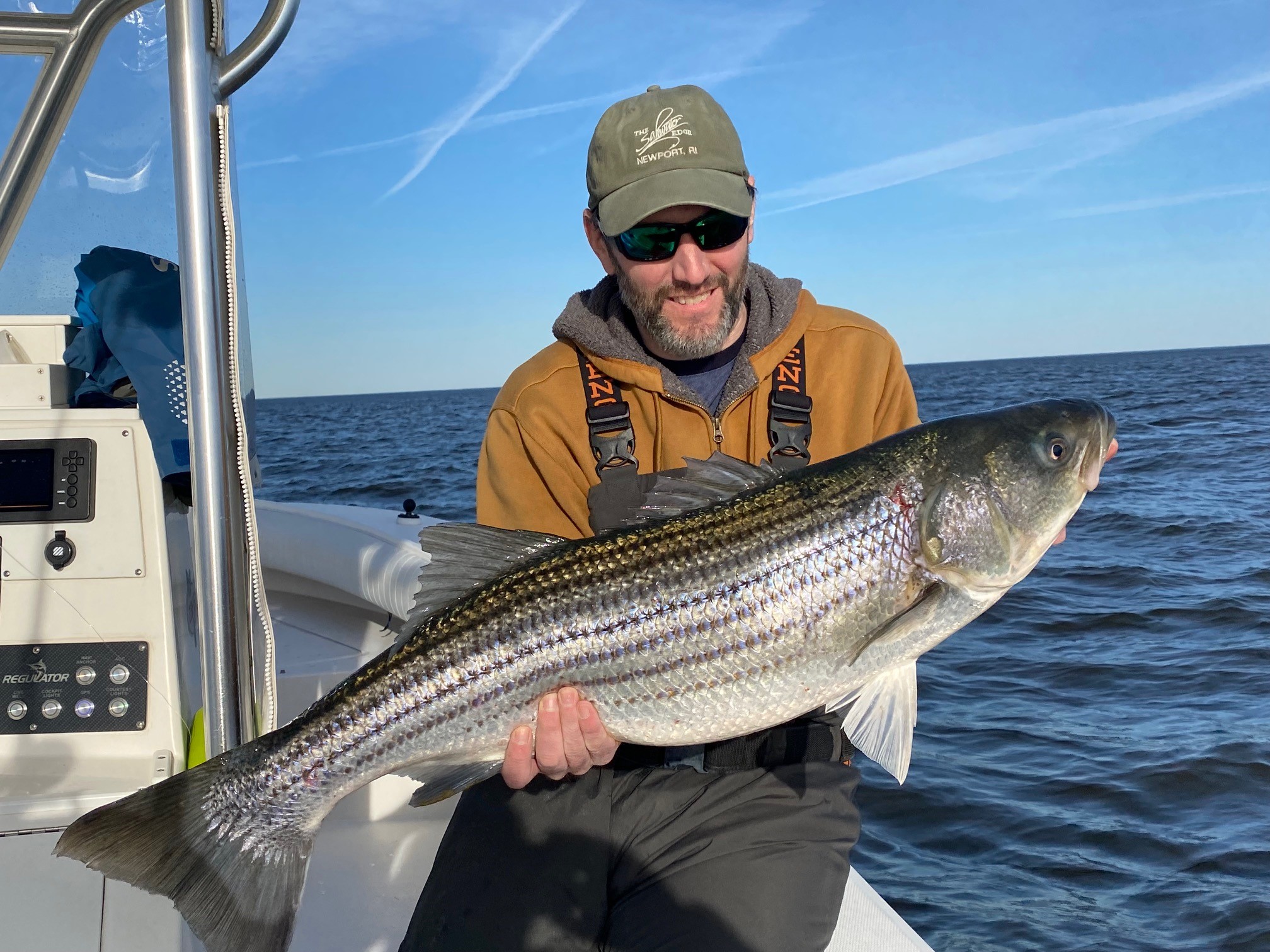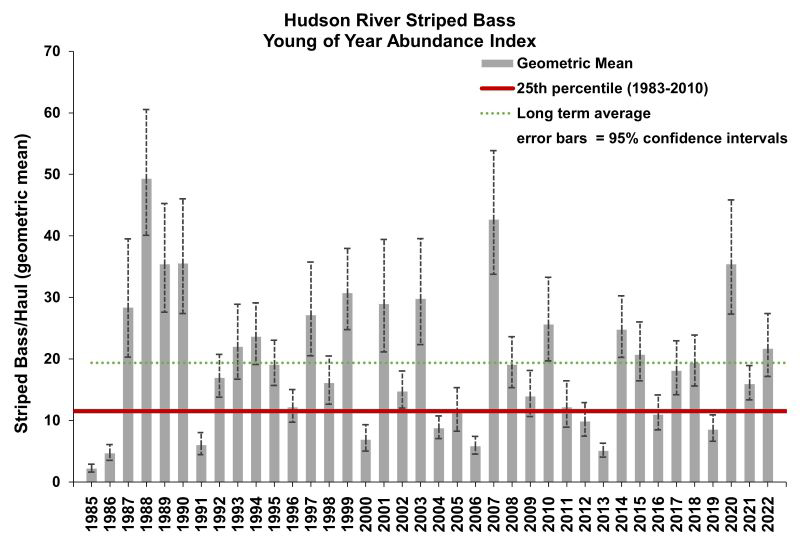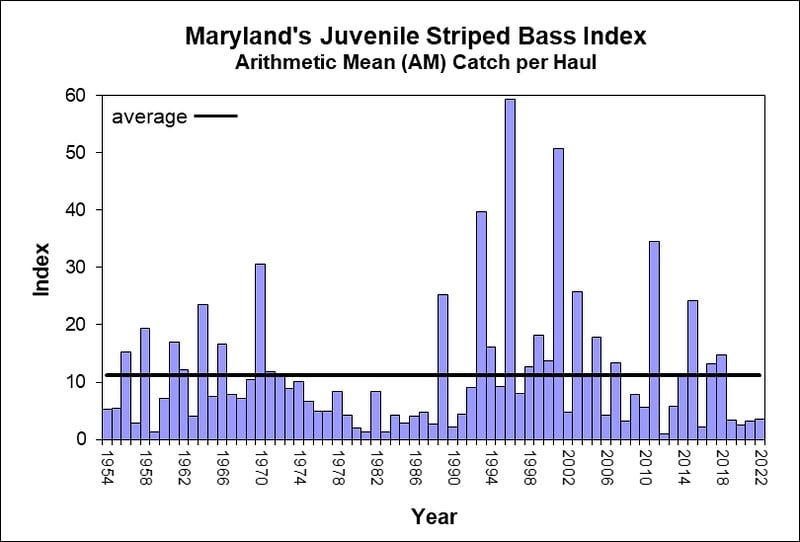
The New York Department of Environmental Conservation (DEC), recently released their annual young of the year (YOY) report for juvenile striped bass in 2022. If you’re not familiar with how these samples are taken and how the numbers are calculated, DEC officials collect samples over a series of weeks at several predetermined locations using a seine net. The species in each haul are counted and cataloged and then they take the counts for juvenile striped bass, compile them and calculate an average for the entirety of the study. The DEC conducts this survey every single year so that they can monitor the spawning success of striped bass in the Hudson River.
Anglers fishing the Hudson River for striped bass should be aware that this unique fishery has its own set of regulations, a tighter slot limit is imposed north of the George Washington Bridge that was designed to protect spawning-age fish; 1 fish between 18 and 28 inches and the fishery is closed from December 1 through March 31. The goals of the YOY study go beyond just monitoring spawning success and future abundance of adult striped bass, they also monitor the environmental conditions during the spawning and maturation processes in an effort to understand how water conditions, water quality and weather affect spawning success each year.

For the second time in three years and for the fifth time in the last decade, the average haul was at or above the long-term average of 19 fish; this year’s average was slightly above that number. Not much is known about what percentage of the striped bass population originates in the Hudson, but those of us who follow the fishery closely can attest to the fact that these fish certainly make an impact, particularly in the spring when anglers enjoy fantastic action for trophy class fish in Raritan Bay as they stage before running upriver to spawn and then a month later when a large contingent of these fish make a left through the East River, setting off the May run of large stripers in western Long Island Sound. And while we may not know the true contribution the Hudson River fish make to the East Coast stocks of striped bass, a successful spawning year is always great news.
The Chesapeake Bay results coming out of Virginia for 2022 were status quo, an average of 7.95 which is slightly above the long term average of 7.77 and marks the tenth year in a row with average or above numbers. As for the New Jersey Division of Fish & Wildlife’s Delaware River Seine Survey, from June through October, 287 hauls were completed catching a total of 610 striped bass, with 502 measured as young-of-year (82%). The preliminary annual whole river YOY geometric mean is 0.735, which ranks 28th out of the 42-year time series. These numbers are slightly higher than the geometric mean for 2021 (0.647) but lower than the time series average of 1.119.

However, the Big Kahuna in striped bass production, the Maryland portion of the Chesapeake Bay, produced numbers that were well below average for the fourth consecutive year at 3.6 fish per haul, this is slightly above last year’s 3.2, but falls nearly 8 fish short of the long-term average of 11.3. The Chesapeake Bay is the East Coast’s biggest striped bass producer so there is reason for concern as weak recruitment years in the upper Chesapeake have historically foretold down years for striped bass fishing in the future.
The good news is that there are many strong year classes behind them and with the robust 2015 year class fully coming of spawning age this year (NOAA says female stripers will begin spawning between 4 and 8 years of age, males can spawn as early as two years of age), there is hope for a rebound in 2023. The combinations of these secondary spawning grounds like the Hudson and the Delaware, may be just what we need to sustain our amazing striped bass fishery through these lean years in the Chesapeake.
The DEC has been conducting the Hudson River surveys since 1985, the Delaware River studies began in 1980 and the first seine studies in the Chesapeake Bay were conducted nearly 70 years ago in 1954.


